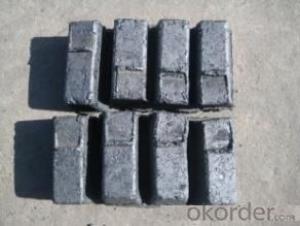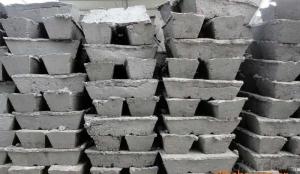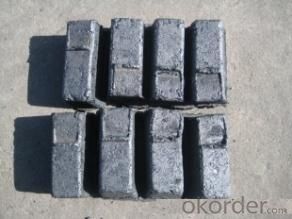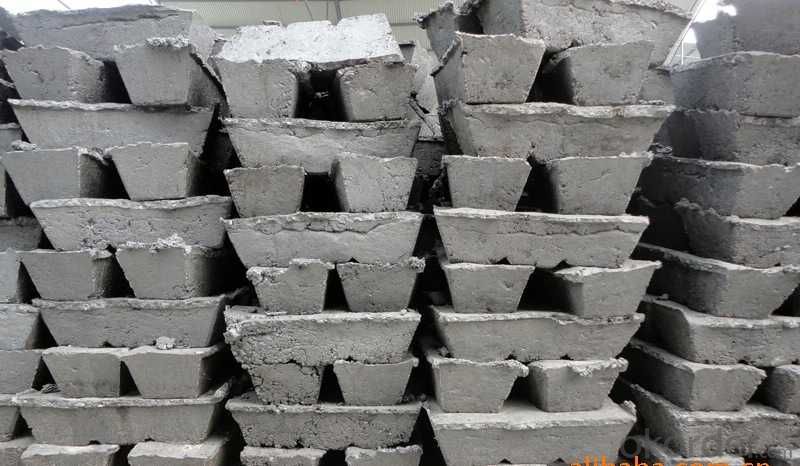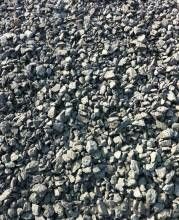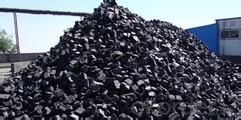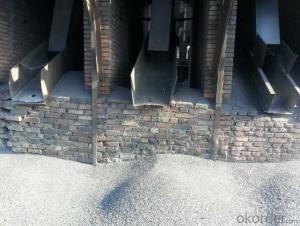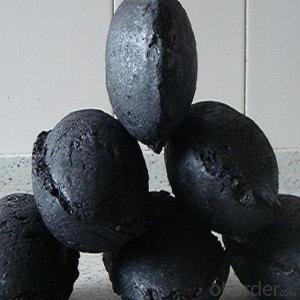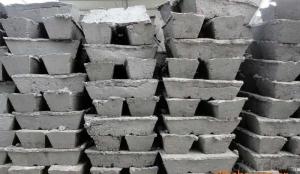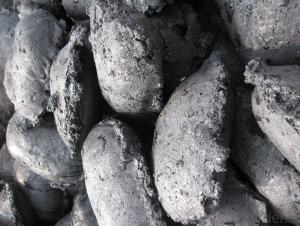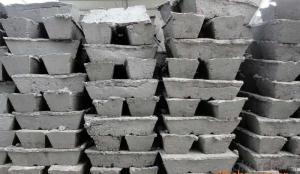Carbon Electrode Paste with Ash 6%max
- Loading Port:
- Lianyungang
- Payment Terms:
- TT OR LC
- Min Order Qty:
- 20 m.t.
- Supply Capability:
- 800 m.t./month
OKorder Service Pledge
OKorder Financial Service
You Might Also Like
Spcifications
1:carbon eletrode paste
2:for ferroalloy,calcium carbide manufacture
3:HS 3801300000,YB/T5212-1996,ISO9001:2008
Product Description
Carbon Electrode Paste is a self-baking electrode used in submerged arc furnaces for delivering power to the charge mix. Electrode Paste is added to the top of the electrode column in either cylindrical or briquette form. As the paste moves down the electrode column the temperature increase causes the paste to melt and subsequently bake forming a block of electrically conductive carbon. Electrode Paste is essentially a mix of Electrically Calcined Anthracite (ECA) or Calcined Petroleum Coke (CPC) with Coal Tar Pitch.
Graphite/Carbon Electrode Paste Specification:
| PARAMETER UNIT GUARANTEE VALUE | ||||||
| Ash.( % ) | 4.0 max | 5.0 max | 6.0 max | 7.0 max | 9.0 max | 11.0 max |
| V.M (%) | 12.0-15.5 | 12.0-15.5 | 12.0-15.5 | 9.5-13.5 | 11.5-15.5 | 11.5-15.5 |
| Compress Strength. | 18.0 min | 17.0 min | 15.7 min | 19.6 min | 19.6 min | 19.6 min |
| Specific Resistance | 65 max | 68 max | 75 max | 80 max | 90 max | 90 max |
| Bulk Density | 1.38 min | 1.38 min | 1.38 min | 1.38 min | 1.38 min | 1.38 min |
Picture:
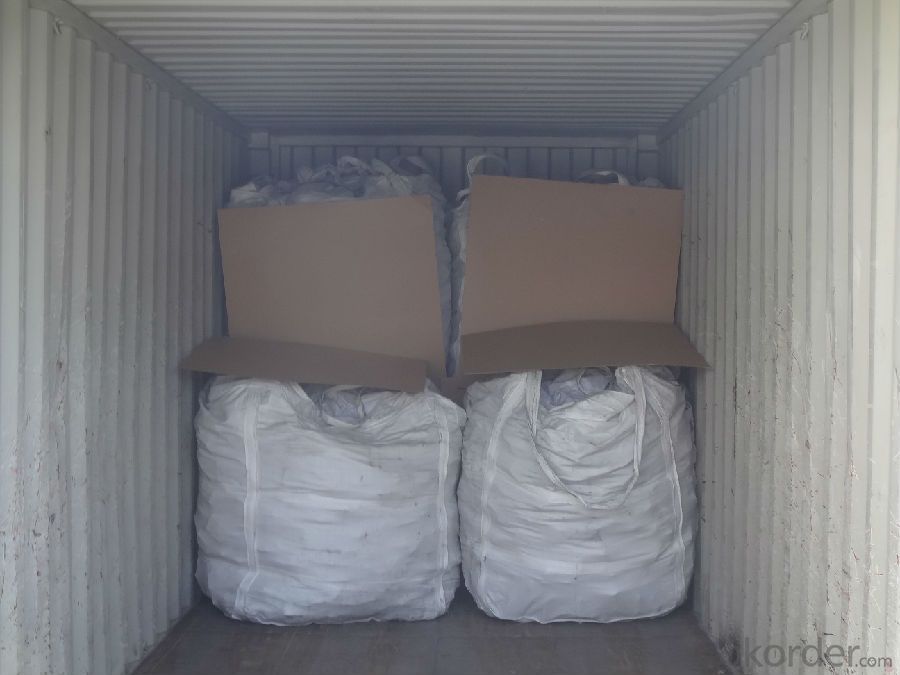
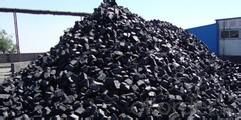
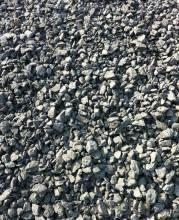
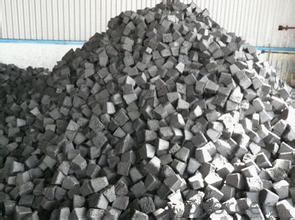
We Also supply all kind of carbon electrode and below materials, please contact us if you have any enquiry about it.
Calcined Anthracite
Calcined Petroleum Coke
Coke (Met Coke, Foundry Coke, Semi Coke)
Company information:
China National Building Materials Group is a stated -owned enterprise in charge of administrative affairs in China buiding materials industry.Established in 1984 CNBM is a large group corporation of building materials with total assets of 25 billion and a total stuff of 30000 CNBM now owns 200 subordinating firms of solely owned and joint-venture companies.
- Q: What are the health effects of carbon monoxide poisoning?
- Carbon monoxide (CO) poisoning can have severe health effects. When inhaled, carbon monoxide displaces oxygen in the bloodstream, leading to oxygen deprivation in vital organs. Symptoms range from mild, such as headaches and dizziness, to more severe, including confusion, loss of consciousness, and even death. Prolonged exposure to high levels of carbon monoxide can result in long-term neurological damage or cardiac complications. Therefore, it is crucial to have carbon monoxide detectors in homes and ensure proper ventilation to prevent poisoning.
- Q: How is carbon used in the electronics industry?
- Carbon is used in the electronics industry in various forms, such as carbon nanotubes and graphene, to enhance the performance of electronic devices. These carbon-based materials possess excellent electrical conductivity, high strength, and thermal properties, making them ideal for use in transistors, batteries, capacitors, and other electronic components. Additionally, carbon is used as a crucial element in the manufacturing of printed circuit boards and as a key component in the fabrication of LCD screens and touchscreens.
- Q: What are fullerenes?
- Composed entirely of carbon atoms arranged in a spherical or cage-like structure, fullerenes represent a distinct category of molecules. Their discovery in 1985 sparked significant interest due to their intriguing properties and potential applications across various domains. The most extensively studied and renowned type of fullerene is buckminsterfullerene, also known as C60. This particular fullerene comprises 60 carbon atoms and takes on the form of a hollow sphere resembling a soccer ball. Fullerenes can also consist of varying numbers of carbon atoms, such as C70, C84, or even larger clusters. What sets fullerenes apart is their exceptional stability and distinctive structure. Carbon atoms within a fullerene form covalent bonds, creating a closed network of hexagons and pentagons. This configuration not only gives fullerenes their characteristic shape but also grants them remarkable mechanical, thermal, and chemical stability. Fullerenes possess an array of captivating properties that make them highly appealing for scientific research and technological advancements. They exhibit impressive electrical conductivity and can serve as efficient electron acceptors or donors in organic electronic devices. Additionally, they boast excellent optical properties, such as strong light absorption and emission, which have led to their utilization in solar cells and photovoltaic devices. Furthermore, fullerenes have demonstrated potential in medical and biological applications. Their unique cage-like structure allows for the encapsulation of other molecules within their hollow interior, making them ideal candidates for drug delivery systems. Fullerenes also possess potent antioxidant properties, making them viable contenders for various therapeutic treatments. To summarize, fullerenes represent an enthralling group of carbon-based molecules with distinctive structures and extraordinary properties. Their versatility and potential applications in electronics, energy, medicine, and other fields continue to be explored, rendering them an area of study that is both thrilling and promising within modern science.
- Q: What are the impacts of carbon emissions on the spread of infectious diseases?
- The spread of infectious diseases is significantly impacted by carbon emissions. When fossil fuels like coal, oil, and natural gas are burned, they release large amounts of carbon dioxide (CO2) and other greenhouse gases into the atmosphere. These emissions contribute to climate change, which in turn affects the distribution and transmission of various infectious diseases. Changes in temperature are one of the main ways carbon emissions influence the spread of infectious diseases. As global temperatures rise, it creates favorable conditions for disease-causing agents and their vectors to survive and multiply. For example, warmer temperatures can expand the geographic range of disease-carrying insects like mosquitoes, which transmit diseases such as malaria, dengue fever, and Zika virus. Carbon emissions causing climate change can also disrupt ecosystems and alter the behavior of animals that serve as hosts or reservoirs for infectious diseases. Changes in migration patterns, breeding cycles, and hibernation can affect disease dynamics, making them harder to control. For instance, warmer temperatures may lead to an increase in tick populations, raising the risk of tick-borne diseases like Lyme disease. Moreover, carbon emissions contribute to air pollution, which negatively impacts respiratory health. Pollutants like particulate matter and nitrogen dioxide weaken the immune system, making individuals more vulnerable to respiratory infections such as influenza and pneumonia. These pollutants also worsen respiratory symptoms in people already infected with respiratory diseases. The effects of carbon emissions on the spread of infectious diseases extend beyond humans. Changes in climate patterns can disrupt agricultural systems, resulting in food insecurity and malnutrition. These conditions weaken the immune systems of vulnerable populations, making them more susceptible to infectious diseases. Recognizing the link between carbon emissions and the spread of infectious diseases is crucial in order to mitigate their impacts. Reducing carbon emissions by transitioning to cleaner energy sources and adopting sustainable practices can help mitigate climate change and limit the expansion of disease vectors. Additionally, investing in public health infrastructure and surveillance systems can improve our ability to detect and respond to outbreaks, minimizing their spread and impact on human populations.
- Q: How does carbon impact the availability of sustainable agriculture practices?
- Carbon impacts the availability of sustainable agriculture practices by affecting climate change and soil health. Excessive release of carbon dioxide into the atmosphere contributes to global warming, altering weather patterns and making it harder for farmers to maintain consistent crop yields. Additionally, excessive carbon in the atmosphere leads to increased acidity in the oceans, affecting marine ecosystems and seafood availability. On the other hand, carbon sequestration through practices like agroforestry and regenerative agriculture helps mitigate climate change, improves soil fertility, and promotes sustainable farming methods. By reducing carbon emissions and adopting carbon sequestration techniques, sustainable agriculture practices can be more readily available and effective in ensuring long-term food security.
- Q: How does carbon affect the quality of drinking water?
- Carbon can affect the quality of drinking water through two main mechanisms: activated carbon filtration and carbon dioxide (CO2) absorption. Activated carbon filtration is commonly used in water treatment processes to remove organic contaminants, chemicals, and odors, improving the taste and odor of drinking water. On the other hand, excessive dissolved carbon dioxide in water can make it acidic and affect the pH level, potentially making it corrosive and altering the taste. However, carbon itself is not harmful to human health and can be beneficial in certain forms, such as in the form of activated carbon filters.
- Q: What are the consequences of increased carbon emissions on political stability?
- Increased carbon emissions can have significant consequences on political stability. Firstly, it can lead to environmental degradation and natural disasters such as extreme weather events, rising sea levels, and food and water scarcity. These disasters can disrupt economies, displace populations, and create social unrest, ultimately straining political systems. Additionally, carbon-intensive industries often rely on fossil fuels, which can lead to economic disparities and inequality, further fueling social and political tensions. The resulting conflicts over resources, migration, and access to basic needs can undermine political stability and exacerbate existing political challenges. Overall, increased carbon emissions contribute to a range of environmental, economic, and social factors that can erode political stability at local, national, and global levels.
- Q: What's the difference between coal and carbon?
- Difference can be big, one is coal, one is carbon, at least the price is not the same
- Q: 14 is the upper left corner of the mark, please answer a bit more detailed, thank you!
- Enter 14C, select "14", "point font" or "tool" button "superscript"".
- Q: What are carbon nanomaterials?
- At the nanoscale, carbon nanomaterials are composed of carbon atoms arranged in different structures. These structures encompass carbon nanotubes, fullerenes, and graphene. Carbon nanotubes are cylindrical in shape, consisting of rolled-up graphene sheets. Fullerenes, on the other hand, are closed-cage molecules made up of carbon atoms. Graphene is a single layer of carbon atoms arranged hexagonally. The unique properties of carbon nanomaterials make them highly desirable for various applications. They possess exceptional mechanical strength, high electrical and thermal conductivity, and excellent chemical stability. These properties are a result of the strong covalent bonds between carbon atoms and the specific arrangements of these atoms in the nanoscale structures. Carbon nanomaterials have found numerous applications across different fields due to their remarkable characteristics. In electronics and computing devices, their high electrical conductivity and small size make them ideal for creating faster, smaller, and more efficient components. Composite materials benefit from the use of carbon nanotubes, as they enhance mechanical strength and durability. Moreover, carbon nanomaterials show promise in the field of medicine and healthcare. They can be utilized in drug delivery systems to encapsulate and transport drugs to specific targets in the body. Additionally, their antibacterial properties make them potential candidates for developing antimicrobial coatings and surfaces. Overall, carbon nanomaterials are a diverse class of materials with exceptional properties. These properties have resulted in exciting applications across various industries. As research continues, their potential uses are likely to expand, revolutionizing fields such as electronics, medicine, and materials science.
Send your message to us
Carbon Electrode Paste with Ash 6%max
- Loading Port:
- Lianyungang
- Payment Terms:
- TT OR LC
- Min Order Qty:
- 20 m.t.
- Supply Capability:
- 800 m.t./month
OKorder Service Pledge
OKorder Financial Service
Similar products
Hot products
Hot Searches
